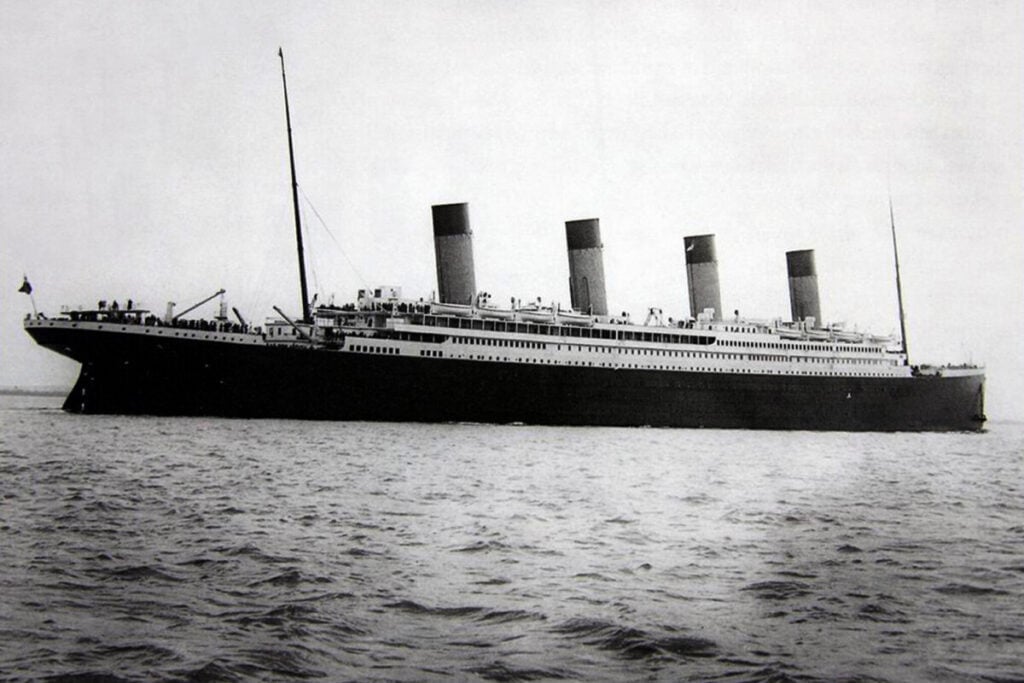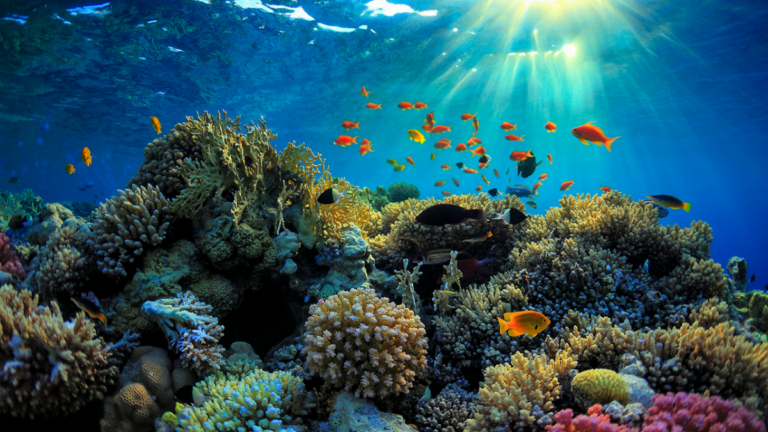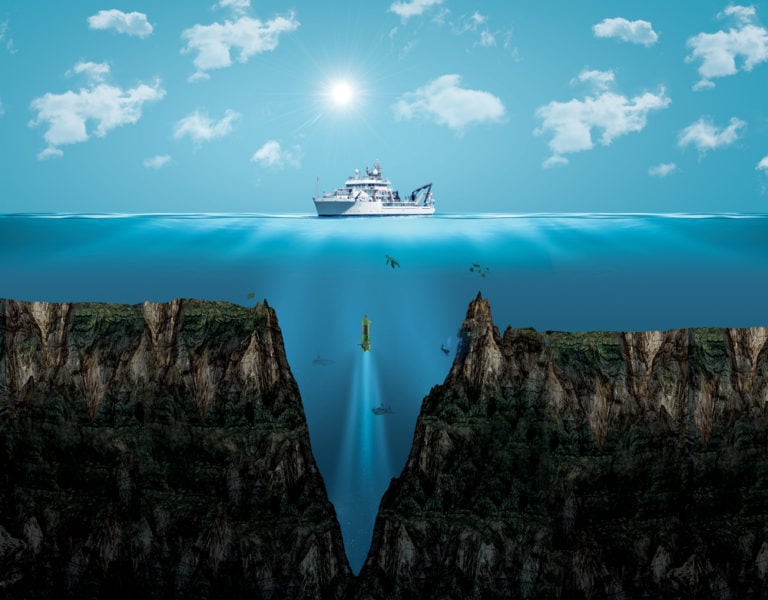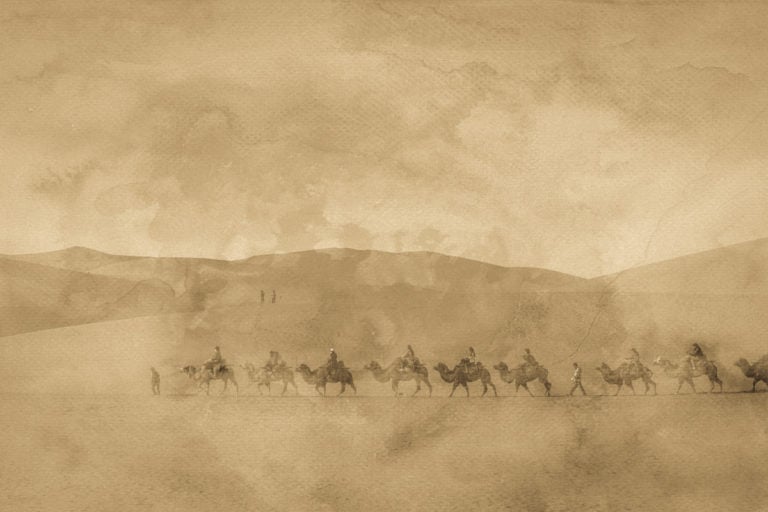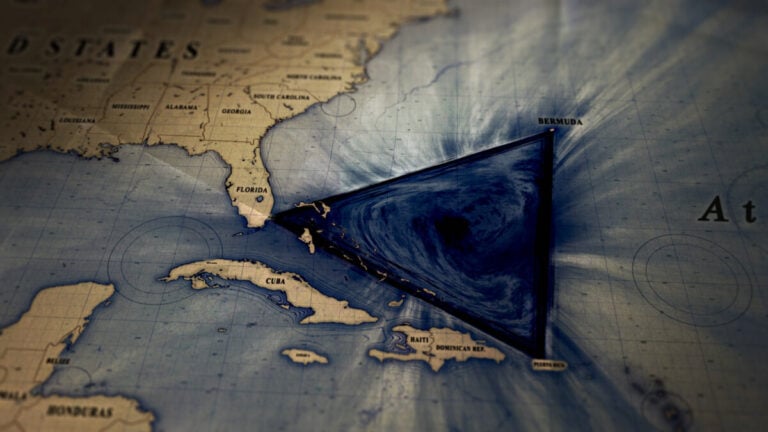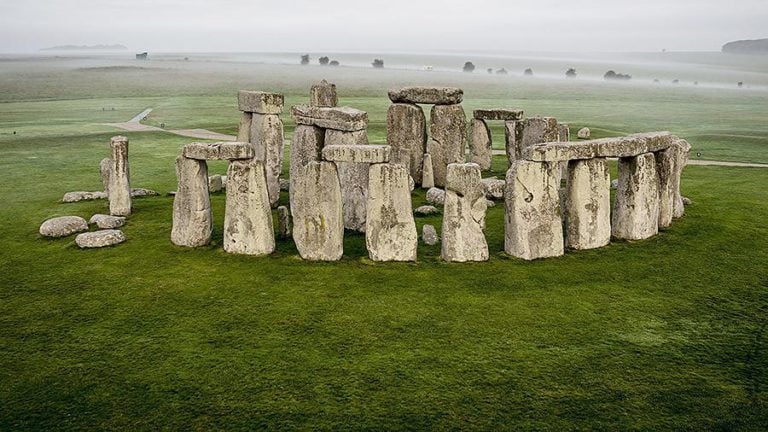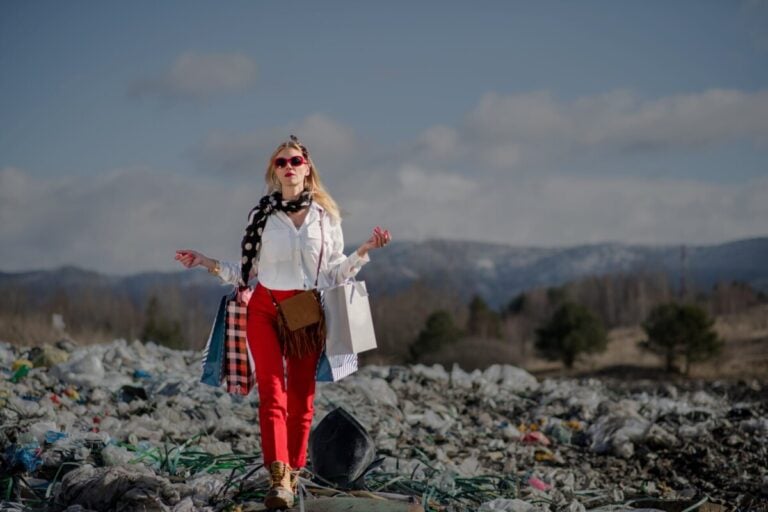Titanic is an Olympic class passenger ship owned by the British White Star Line. It sank while making its first cruise in the North Atlantic. This sad event occurred in 1912 on April 15 due to the collision of the liner with an iceberg.
On April 10, 1912, the Titanic was sent on a voyage from Southampton (Great Britain) to New York (America). On April 10-11 he stopped in Cherbourg (France) and Queenstown (Ireland). The ship then continued its journey in the Atlantic Ocean. Arrival in New York was expected in 7 days.
There were 2,225 people on board the ship (908 crew members and 1,317 passengers), of whom 1,500 died.
Creation of the Titanic
The ship’s design was developed by the shipyard’s design bureau, which included the chief director of the engineering council, Thomas Andrews, and the managing director, Alexander Carlyle. A large amount of documentation was completed. The drawings alone made up a package of 411 documents.
Preparatory stages
For the construction of the Titanic liner, the “Thompson dry dock” platform was specially built. Its width was 39 m and its length was 259 m. Before the construction of the largest vessel began, work was first carried out to deepen the bottom.
To be able to build such a ship, several construction sites had to be combined. The world’s largest portal crane was also built, which had a boom 60 meters long and weighed 200 tons. 12 tower cranes and 6 special platforms moving around the shipyard were used as additional lifts.
Construction
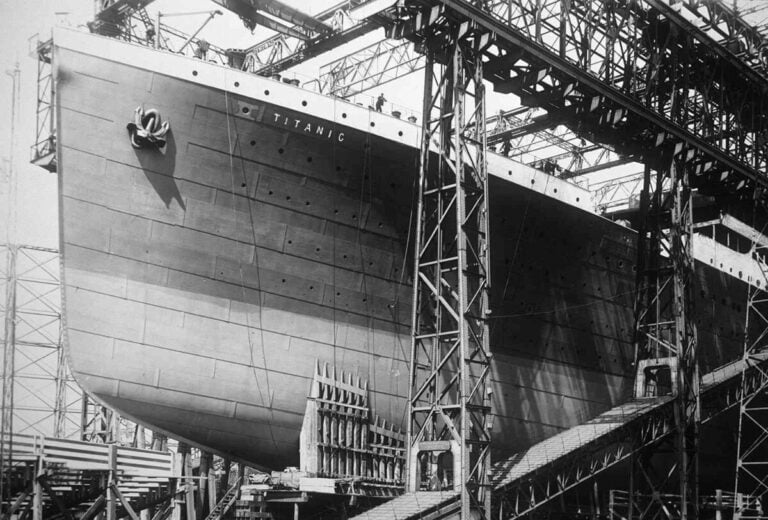
In total, the construction of the vessel required the use of more than 3 million metal rivets, most of which were driven in manually, and the rest were fastened using certain riveting hydraulic equipment.
Approximately 1,500 people were involved in the construction of the liner. Moreover, even teenagers of thirteen years old were involved in these works. Their duties included heating the rivets and presenting them to the required place.
Safety regulations in those years were not fully enforced, so there were a significant number of injuries. During the construction of the ship, the death of 6 workers and 246 accidents were recorded.
Launching of the vessel from the shipyard and completion of construction
Before carrying out the process of lowering the liner into the water, supports and scaffolding were removed, and the launching rails were fixed and lubricated. This required the use of almost 30 tons of special oil for steam locomotives.
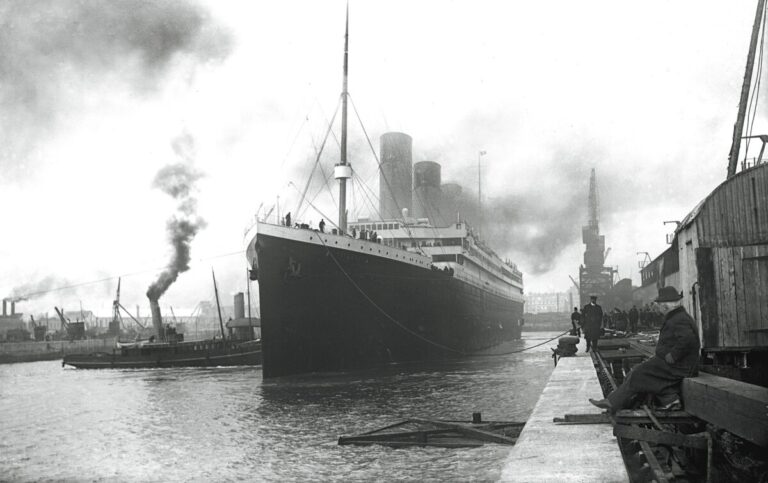
In 1911, on May 31, the first launch of the Titanic took place in the port of Belfast. This procedure was accompanied by the launch of a signal flare. In 62 seconds, the ship successfully descended into the Lagan River.
Then the ship was towed to a special pier to continue its completion – installing the necessary equipment, connecting communication networks, furnishing the premises, and installing ventilation systems.
Liner layout
The ship was equipped with a high-power radiotelegraph transmitter to enable passengers to send “marconigrams.”
It was equipped with a large number of features for a safe stay on a cruise – waterproof door blocks and compartments. Journalists and experts called the Titanic “unsinkable.”
The ship was equipped with 48 lifeboats. But in reality there were only 20 boats on board. Moreover, four of them were collapsible, which were distinguished by their difficult descent into the water. These twenty lifeboats could only hold 1,178 people.
Decks
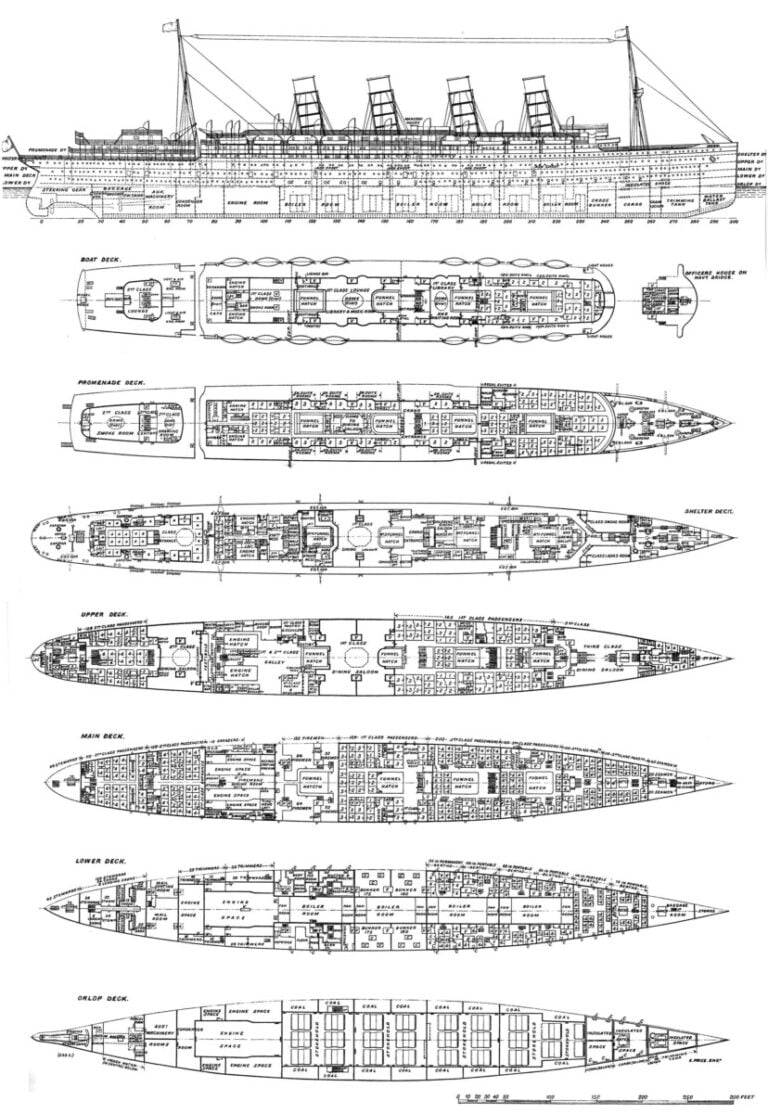
The liner had 8 decks. One of them was allocated to accommodate lifeboats. The remaining decks had different purposes and were designated by symbols A-G. The distance between them was 250-320 cm.
The decks were in this order:
- Boat deck – lifeboats were located along it. There was also a wheelhouse, a bridge (at a height of 2.4 meters), officer cabins, a gym and a staircase to the 1st class area. The deck was divided into 4 entrances – separately for 2nd and 1st class passengers, engineers and officers.
- Deck A – was completely reserved for first class. It contained a waiting room, Palm Court, reading rooms, smoking rooms and cabins.
- Deck B – occupied the upper load-bearing tier of the hull. It housed cabins for 1st class passengers, and 6 of the most luxurious of them had individual promenades. There was also a lobby, a smoking room for 2nd class passengers, and at the stern there was a poop deck intended for walking by 3rd class passengers.
- Deck C is a completely monolithic deck. The stern was used for walking third class passengers. It contained crew quarters, 3rd class common rooms, a 2nd class library and 1st class cabins.
- Deck D – 1st and 2nd class dining saloons and 1st class reception were located here. The open part of the deck was reserved for the 3rd class, and the bow part was for firefighters.
- Deck E – intended for passengers of different classes and service personnel. There was also the longest passage (called “Scotland-Road”), which was at the disposal of the ship’s crew.
- Deck F – it accommodated 3rd and 2nd class passengers, and also had a small number of cabins for the ship’s crew. There was also a Turkish bath, a swimming pool, and a dining room (for 3rd class passengers).
- Deck G – interrupted by orlop decks. It housed food warehouses, a court, and a postal sorting facility.
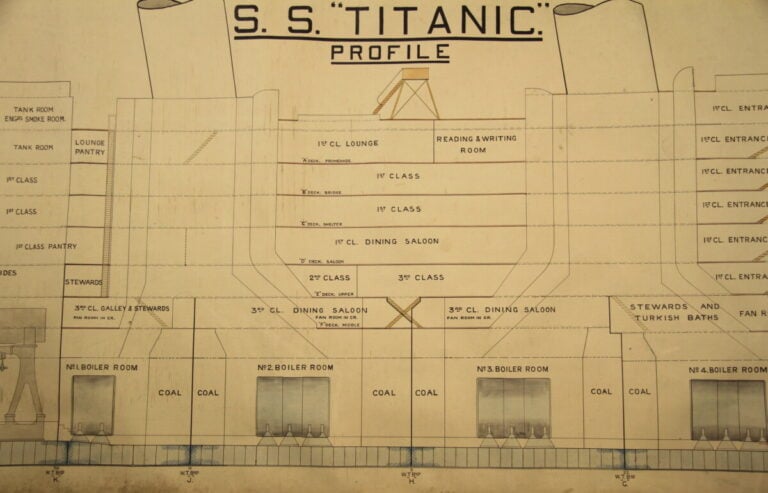

The liner also had orlop decks. They were used as cargo compartments and platforms to house electric generators, turbines, engines or boilers. Passengers were prohibited from entering this part of the ship. Orlop decks were connected to the upper tiers of the ship by flights of stairs.
Bulkheads
The ship’s hull was divided into 16 separate compartments with transverse bulkheads. The ship’s designers calculated the possibility of its staying afloat in the event of flooding of adjacent sections that did not have an upper floor.
Double bottom
The additional bottom almost completely occupied the entire length of the ship. The space between the bottoms was divided into separate sections. There were 46 of them in total. They were filled with water for drinking and ballast.
The double bottom had a cellular structure and was made of high-strength waterproof steel, therefore preventing the ingress of water from overboard.
Pipes
There were 4 pipes on the ship. The boiler smoke was removed only through three of them. The fourth pipe served as a ventilation hood from other public spaces. It was also intended for emergency exit.
Masts
There were 2 masts on the liner, which served as supporting elements for the ship’s antennas. At the top of the stern mast was a pennant of the White Star Line corporation, red in the shape of a triangle, on which a white star was depicted.
Equipment
Titanic was equipped with:
- Electrical devices and generators.
- Diesel-electric power plants.
- Steam boilers.
- Tiller steering machine.
- Communication devices – Morse code and telephony.
- Drainage and water supply systems.
- Interior arrangement
Office premises
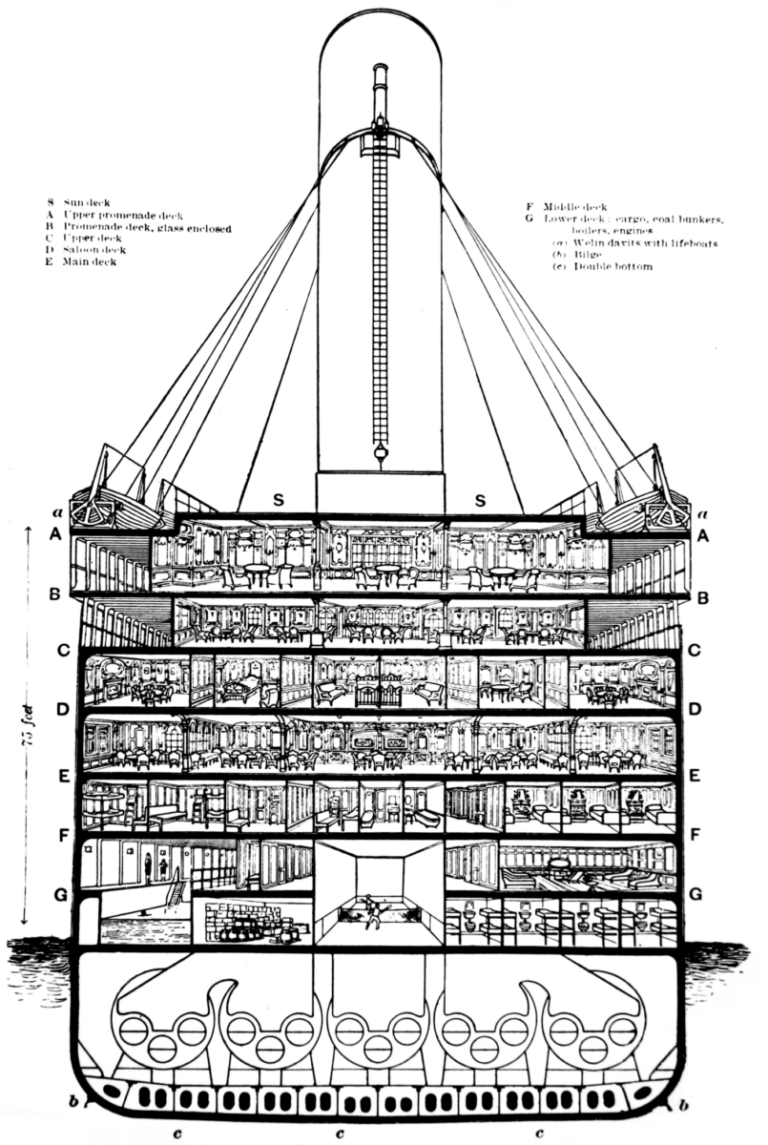
The radio rooms and radio operators’ cabins were located in adjacent rooms. There was also a separate promenade and a smoking lounge for mechanics.
In the bow deck area there was a galley for sailors, a carpentry workshop, an infirmary (for the ship’s crew), a dining room and a stoker.
In the middle of the deck there was a kitchen room in which food was prepared for the crew. Conveyor-type elevators were used to quickly deliver products to the kitchen premises.
The rooms for the ship’s crew were mainly located on deck E (in the bow area). The quarters for stokers (53 people) and stewards (40 people) were located on the F deck.
Passenger premises
Public salons and cabins were divided into 3 classes, taking into account the status of passengers.
First class
For 739 1st class passengers, 370 cabins with a capacity of no more than 4 people were provided. The most luxurious rooms were furnished in 19 styles. They were finished with polished panels of sycamore and mahogany.
The cabins featured oak and brass beds with fine silk linens. Electric fireplaces, lamps and sockets were installed in them.
The two most expensive and luxurious luxury apartments included a separate deck for walks, a bathroom, a dressing room, several sleeping areas and a living room. One apartment was intended for the director of the White Star Line, and the second for the American millionaire Charlotte Cardze and her son.
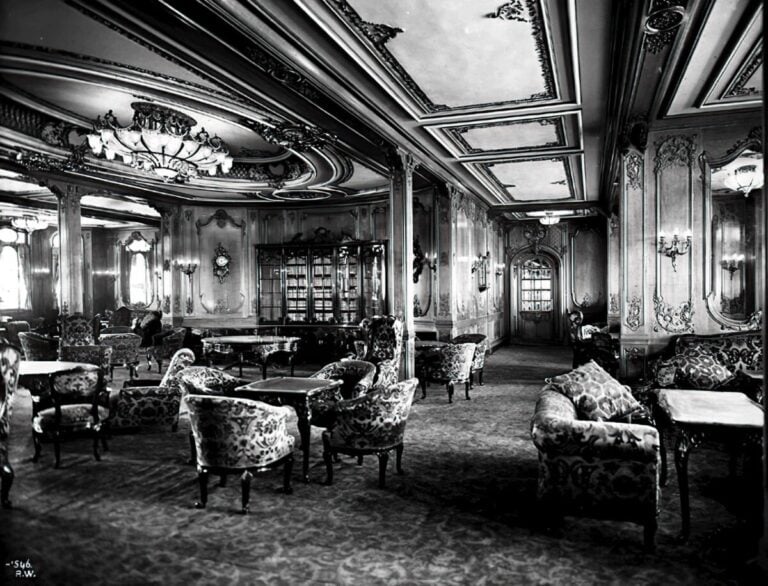
In addition, a whole complex of Turkish baths, made in neo-Moorish style, was provided for 1st class passengers. It contained rooms for massage and relaxation, furnished in incredibly chic and pompous fashion. They had fountains with drinking water, and elegant oriental lamps were placed everywhere.
All interior accessories and walls were finished in marble, teak with sophisticated Moorish patterns and designs. The niches were decorated with mahogany panels and brass lampshades.
Between the relaxation rooms and massage rooms there was a bathtub, inside of which there were ultraviolet lamps. It served as a solarium.
On the “D” deck there was a dining salon with a piano located in it. Its visitors were offered the most exquisite dishes. Near the staircase main entrance there was a hall, furnished with furniture with aristocratic velvet upholstery and covered with luxurious floor carpets. The wall surfaces were decorated with a unique French tapestry.
On the “C” deck there was a currency exchange office, an information office, a luggage room for valuables, sun lounger rental, a hairdresser and a first-aid post (for 2nd and 1st class passengers). There was also an infirmary and an infectious diseases unit.
At the stern deck there was a cafe “Parisien” and an “A La Carte” restaurant. The inside of the restaurant had elegant carved columns. Its ceiling was decorated with incredibly beautiful floral-themed stucco.
The cafe was set up in a Parisian street style with lattice trellises, compact tables around which wicker chairs were originally located.
Second grade
In addition, they contained a wardrobe, a sofa and a dressing table with a washbasin. The walls in such rooms were finished with painted white wooden panels. The floor was covered with linoleum.
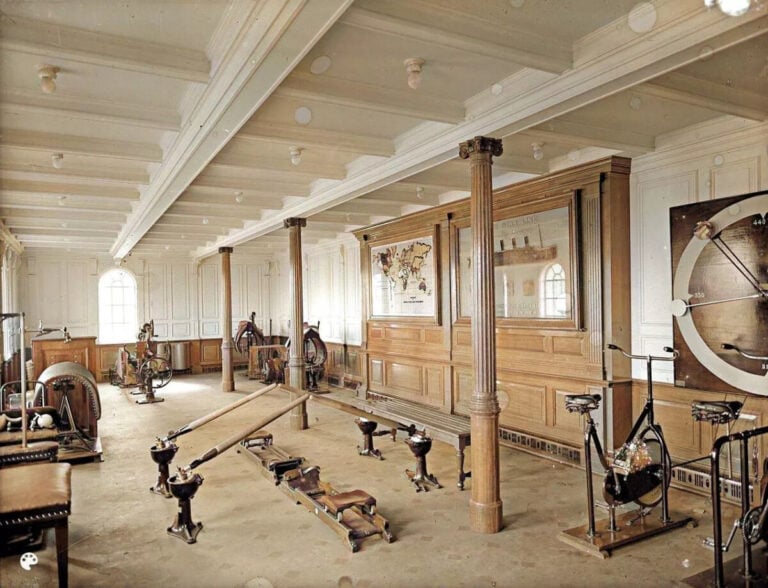
The wall surfaces in the stairwells, smoking lounges and dining room were lined with oak panels.
On the 2nd class decks there was a hair salon, dining salon, library, and smoking room.
The stern part was intended for walking. There were also two stairs and an elevator.
Third grade
Special moving partitions were placed inside the room, with the ability to change the size of the rooms if necessary.
It was also possible to remove the partitions altogether and turn the entire space into a cargo compartment.
There was a dining room on the deck intended for 3rd class passengers. Lunch took place in two shifts with an interval of up to one hour.
There was also a compact first-aid post, a smoking room and a common room. The interior of all rooms was furnished as concisely and simply as possible.
Benches for sitting were provided in public areas, and tables and chairs were provided for card games. The largest room housed a piano. The superstructure parts of the decks were used as walking space for 3rd class passengers.
Number of people on the Titanic
There were 2225 people on the liner:
- 908 – crew members.
- 1317 – passengers.
Crew
Its main composition included:
- Edward John Smith is the captain of the liner, who was planning to retire after this cruise.
- Officers (assistants to the captain) – 7 people.
- Bilge crew – 324 people
- Deck crew – 58 people
- Stewards – 335 people
- Service in dining salons – 69 people
- Musicians – 8 people
- Post employees – 5 people
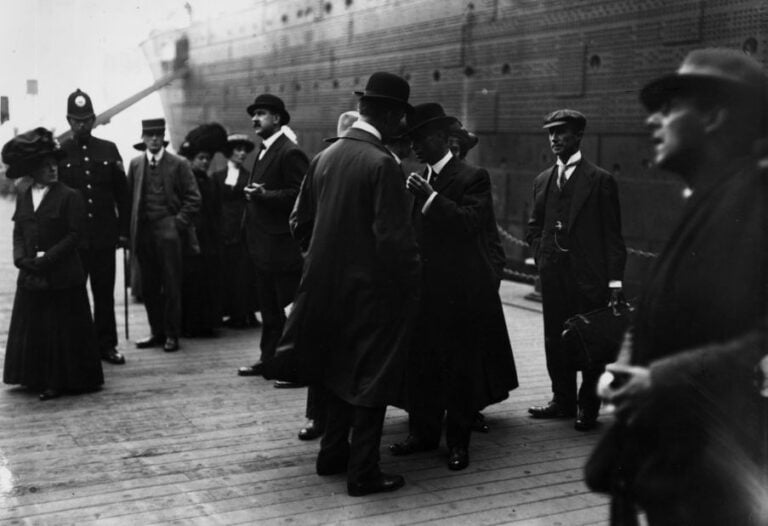
In addition, this list included other service personnel.
Passengers
1,317 people (of which 124 were children) were registered as passengers on the Titanic liner:
- 1st grade – 324 people
- 2nd grade – 285 people
- 3rd grade – 708 people
The Titanic was only half-loaded on its maiden voyage.
Well-known representatives of high society traveled in first class – multimillionaires, industrialists, owners of retail chains, fashion designers, public figures, actors and actresses, writers, as well as managers and designers of the Harland Wolf shipyard, the head of the White Star Line, Joseph Bruce Ismay.
In the second class were representatives of the middle strata of society – doctors, engineers, journalists and businessmen.
In third class, mostly emigrants from various countries of the world who decided to move to the USA traveled on the Titanic liner. Among them were the unemployed and representatives of various professions – nurses, housekeepers, tailors, gardeners, peasants, lumberjacks, waiters and artisans.
The sinking of the Titanic
In the evening the weather changed and the temperature dropped sharply. There was complete calm on the surface of the water. It was moonless, clear, cold and windless.
At 23:39, the lookout spotted an iceberg at a distance of about 650 meters from the liner. The captain decided to urgently adjust the route. The helmsman was given the order “starboard”, followed by the command “port”. But the ship was too large to reconstruct the maneuver in a short time. Therefore, he continued his full speed inertially before maneuvering to the left.
At 23:40 the liner collided with the iceberg tangentially. As a result of this, 5 compartments in its bow were damaged, and 6 holes almost 1 meter long appeared on the starboard side.
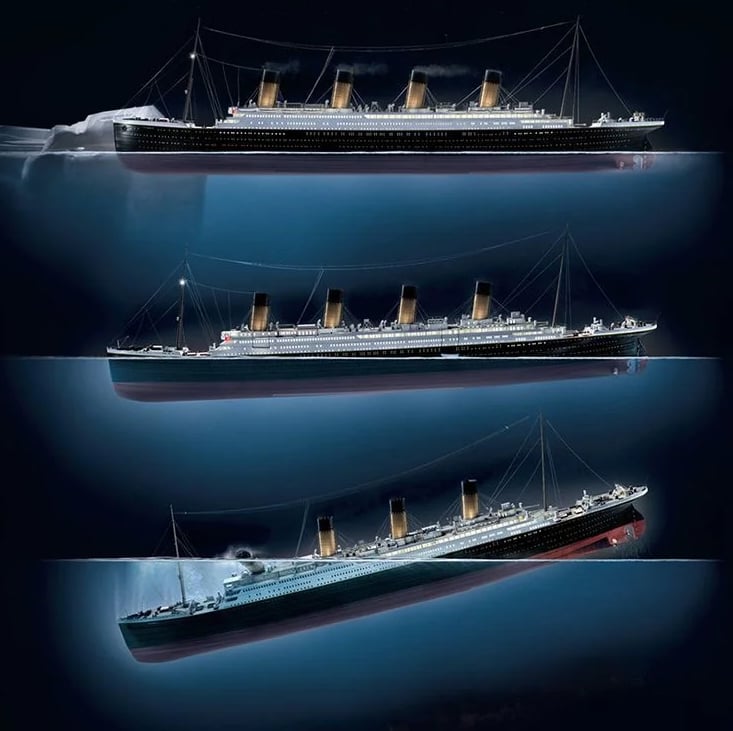
Designer Thomas Andrews was on the ship. He stated that the ship could remain afloat for no more than an hour and a half.
They immediately began preparing lifeboats to evacuate women and children first. In addition, radio operators constantly transmitted distress signals.
At the same time, the passengers initially did not feel the consequences of the ship’s collision with the iceberg, so they left it reluctantly. Outwardly, it seemed that everything was in order – the electricity worked stably, and the ship’s trim did not appear.
In 30 minutes, only 180 passengers were evacuated. Moreover, the boats were launched half empty.
At 1:20 the forecastle was flooded. People began to panic, due to which the evacuation process accelerated.
Passengers of the 3rd class were not able to go upstairs, since the security of the liner, not knowing about the disaster, did not open the bars separating the rooms of different classes from each other.
At 1:30 a.m., the trim of the ship’s bow noticeably increased, and panic became uncontrollable. The team tried to hold back the onslaught of the crowd, including by firing warning shots.
At 2:05 the crew lowered the very last lifeboat.
At 2:10, the captain’s bridge and the deck where the boats were located began to flood. People rushed to the stern.
At 2:15 a chimney collapsed.
At 2:16 a.m. there was a power outage.
At 2:18, with the bow at maximum trim, the ship broke into two parts. The stern sank instantly.
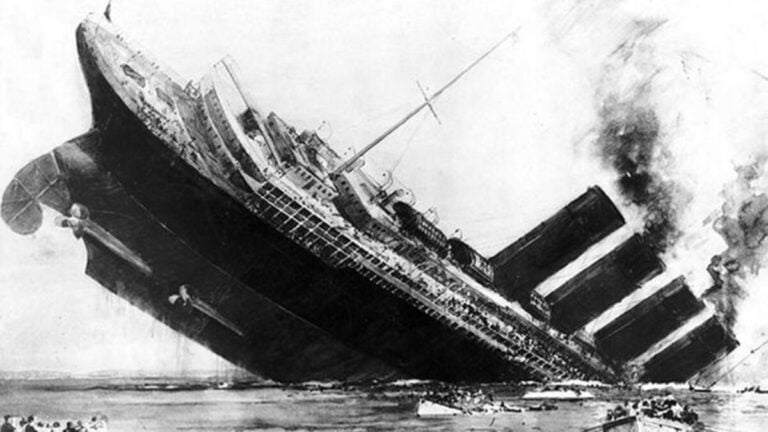
At 2:20 the Titanic sank entirely to the bottom.
Several hundred people were able to swim to the surface of the water, but almost all of them died due to hypothermia.
45 people were saved on two boats. Among them was Rhoda Abbott, the only woman saved after plunging into the water with the sunken ship.
An hour and a half after the steamship completely sank, the ship “Carpathia” arrived at the disaster site, which picked up 712 people who survived the disaster.
The fate of the shipwreck
Immediately after the Titanic disaster, wealthy relatives of the deceased passengers discussed the idea of raising its wreckage. However, in those years such technological capabilities did not exist.
Parts with the wreckage of the Titanic liner are located at a depth of 3750 meters. They were first discovered in 1985 by a search expedition of Texas oil magnate Robert Ballard.
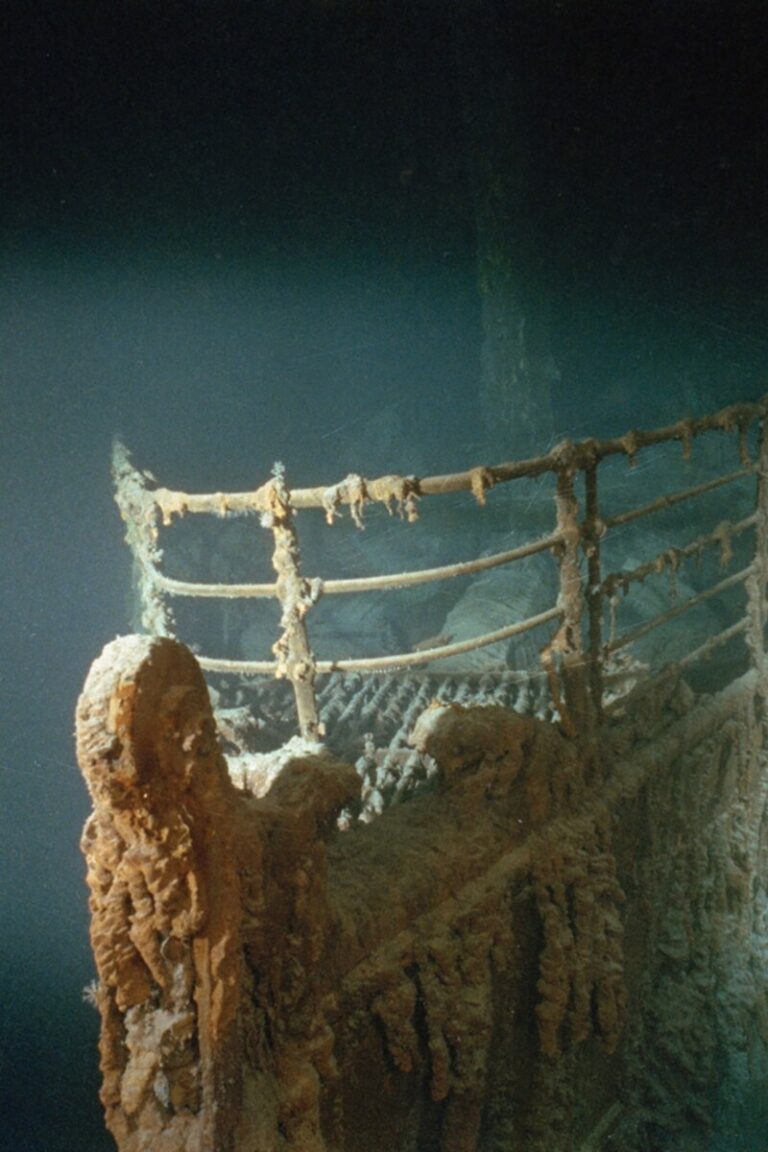
The stern and bow of the sunken steamship are buried quite deep in the mud. Their rise is impossible, since they are practically destroyed.
All the wreckage is covered with plaque, rust and a dense layer of shells, and the interiors are completely destroyed. Their condition is getting worse every year.
In 2022, they showed a video with fragments of the sunken ship Titanic, which was filmed by OceanGate Expeditions.
In May 2023, work was completed to create a high-quality 3-D model so that the entire ship could be viewed in its entirety, and not just its individual parts.
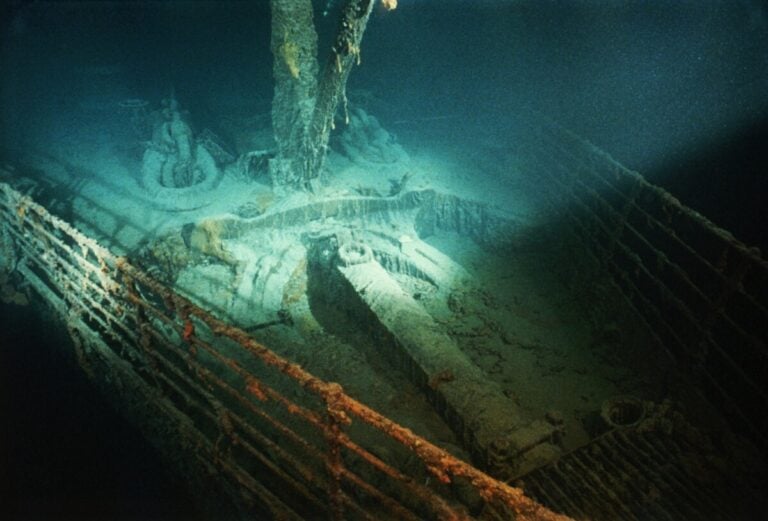
In June 2023, the deep-sea bathyscaphe Titan, which regularly dived to the wreckage, crashed. At the same time, all 5 people who were on board died.
Incarnation in cinema
Interest in the tragic fate of the liner and its passengers has always continued. Many poems, works of art and films were dedicated to these sad events.
Director Jean Negulesco of the film Titanic, which was released in 1953, won the Oscar for best screenplay.
Little-known facts about the Titanic
There have always been many rumors and legends around this “unsinkable” ship. We invite you to find out only reliable information:
- Some print media mistakenly reported that there were no deaths in the disaster.
- The orchestra played music to calm the passengers until the liner sank under the water.
- The ship’s observers could not find the key to the cabin where the binoculars were kept during the cruise, so they relied only on their eyesight and did not have the opportunity to view the surrounding area at a greater distance. This is due to the fact that one of the observers was replaced at the last moment and forgot to give the key. There is a version that this played a fatal role in the tragedy. In 2010, the key was sold at auction for 130 thousand dollars.
- On board the Titanic was the richest man in the world, John Jacob Astor IV, who was returning home from his honeymoon with his wife. The billionaire’s body was discovered after the plane crashed. $2,440 (approximately $60,000 today) was found in his pocket.
- Violet Jessop was able to survive not only the disaster of the Titanic, but also the Britannic.
- All the engineers who were on the liner supported its work until the very end and died along with it.
- The only children who were saved without parents were the Navratil brothers: 2 and 4 years old.
- According to official data, at least 13 couples celebrated their honeymoon on the Titanic liner.
- Only one rescued woman, who went under water with the ship, was able to survive. This is Rhoda Mary Abbott. At the same time, she lost three of her sons in this disaster.
- The production of the first Titanic film (1912) cost about $7.5 million (today $190 million), which is significantly more expensive than the construction of the Titanic liner itself.
- It took 73 years to find the wreckage of the sunken ship.
- Of the 1,500 dead passengers, only 300 were found.
- In 2009, the last passenger who survived the sinking of the Titanic died. At the time of the tragedy she was only 2 months old.
- On the day of the disaster, the crew was supposed to train on the correct seating of passengers in lifeboats. However, the captain canceled it.
- The hangar where the Titanic was built is currently used as a film location. For example, scenes for the film “Game of Thrones” were filmed there.
- There were several people who, having bought tickets for the flight, never came on it.
- 30 days after the tragedy, the film “Titanic Survivor” was released, starring Dorothy Gibson, an American silent film actress, one of the surviving passengers of the liner. However, all the materials of the painting were burned in a fire.
- Experts say it is likely that the wreck will completely disappear by 2030.
The tragic story of the sinking of the Titanic is retold from year to year, acquiring new details and speculation. It has many contradictions and, perhaps, will forever remain not fully disclosed.
